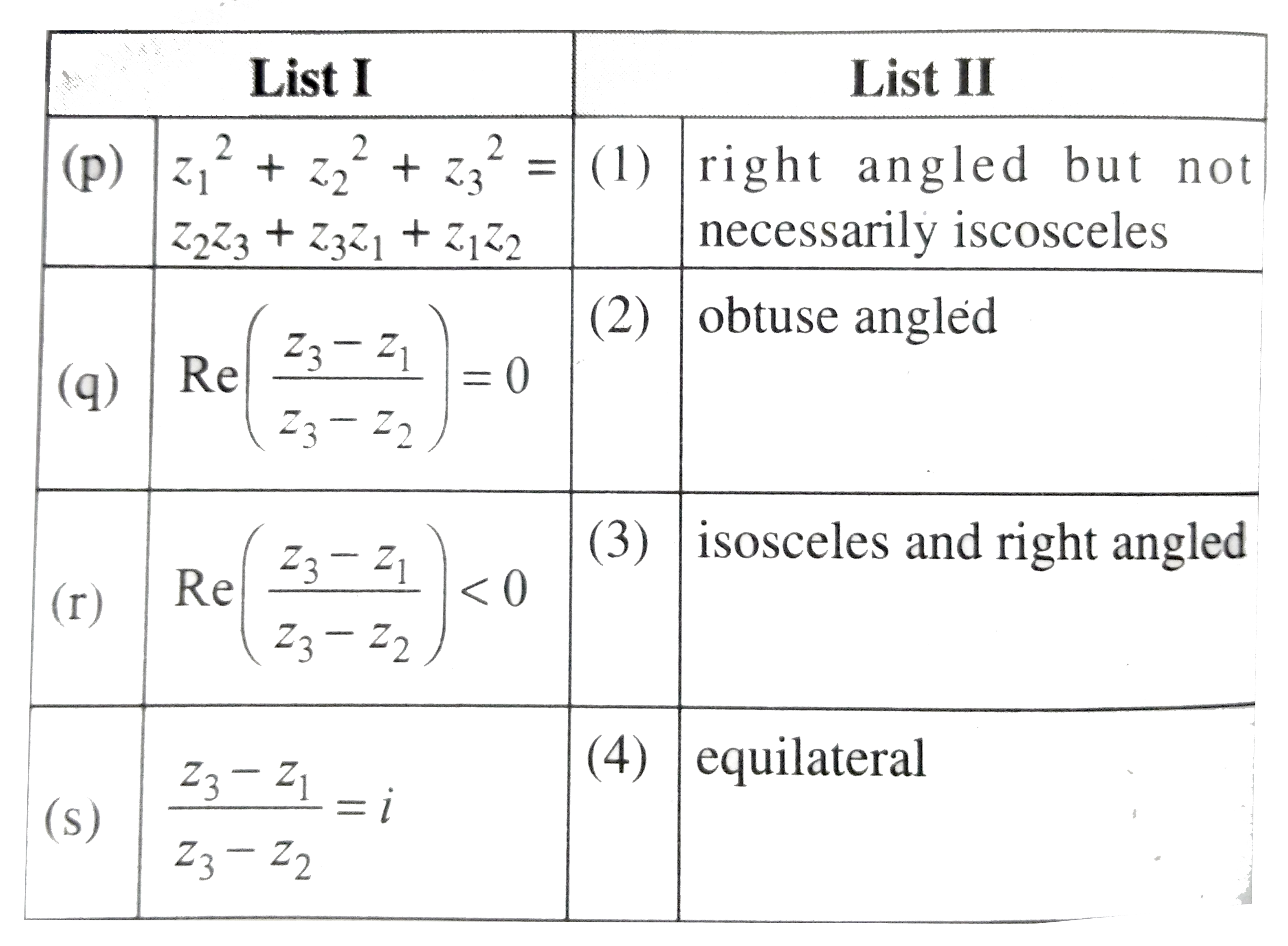The complex number, z=(−√3+3i)(1−i)(3+√3i)(i)(√3+√3i)Solution in Tamil
lies on real axis
lies on imaginary axis
lies in first quadrant
lies in second quadrant
The correct Answer is:B
(b) (−√3+3i)(1−i)(3+√3i)(i)(√3+√3i)
=√3(−1+√3i)(1−i)3(√3+i)(i)(1+i)
=(−1+√3i)(1−i)√3(−1+√3i)(1+i)
=(1−i)22√3=−2i2√3, which lies on imaginergy axis
Topper's Solved these Questions
- BOOK - CENGAGECHAPTER - COMPLEX NUMBERSEXERCISE - Multiple Correct Answer11videos
COMPLEX NUMBERS
- BOOK - CENGAGECHAPTER - COMPLEX NUMBERSEXERCISE - Matching Column1videos
COMPLEX NUMBERS
- BOOK - CENGAGECHAPTER - CIRCLESEXERCISE - Question Bank16videos
CIRCLES
- BOOK - CENGAGECHAPTER - CONIC SECTIONSEXERCISE - Solved Examples And Exercises87videos
CONIC SECTIONS
Similar Questions
Complex numbers whose real and imaginary parts x and y are integers and satisfy the equation 3x2−|xy|−2y2+7=0
03:41View Solutionz1, z2, z3 are vertices of a triangle. Match the condition in List I with type of triangle in List II.

Codes03:22View SolutionIf ax+by=10 is the chord of minimum length of the circle (x−10)2+(y−20)2=729 and the chord passes through (5,15) then the value of (4a+2b) is
02:14View SolutionGiven that A(1,1) and B(2,−3) are two points and D is a point on AB produced such that AD=3AB. Find the coordinates of D.
02:38View SolutionIf i=sqrt(-1) then ((i+sqrt(3))/(-i+sqrt(3)))^(52722)+((i-sqrt(3))/(i+sqrt(3)))^(43006)=
03:37View SolutionProve that [(i+sqrt(3))/(-i+sqrt(3))]^(100)+[(i-sqrt(3))/(i+sqrt(3))]^(100)=-1
07:21View SolutionProve that (i−√3−i+√3)200+(i−√3i+√3)200=−1
06:07View SolutionThe complex number, z=(−√3+3i)(1−i)(3+√3i)(i)(√3+√3i)
02:04View SolutionShow that
(i) {(3+2i)(2−3i)+(3−2i)(2+3i)} is purely real,
(ii) ⎧⎪ ⎪⎨⎪ ⎪⎩(√7+i√3)(√7−i√3)+(√7−i√3)(√7+i√3)⎫⎪ ⎪⎬⎪ ⎪⎭ is purely real.02:55View Solutionसिद्ध कीजिए: (i+√3−i+√3)200+(i−√3i+√3)200=−1
03:27View SolutionShow that (i+√3−i+√3)2ω+(i−√3i+√3)2ω=−1
03:43View Solution((3+i sqrt(3))(3-i sqrt(3)))/((sqrt(3)+sqrt(2)i)-(sqrt(3)-i sqrt(2)))
04:40View Solutionसम्मिश्र संख्या 1+√3i√3+i का कोणांक है :
06:04View SolutionThe amplitude of 1+√3i√3+i is
03:17View SolutionThe complex number (−√3+3i)(1−i)(3+√3i)(i)(√3+√3i) when represented in the Argand diagram is
05:00View SolutionFind the principal argument of the complex number (1+i)5(1+√3i)2−2i(−√3+i)
06:50View Solution

